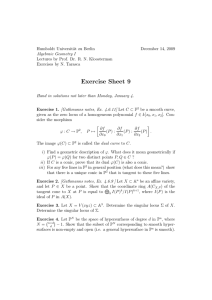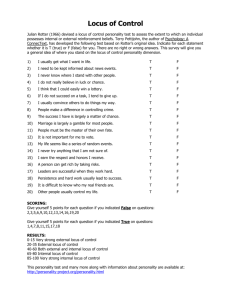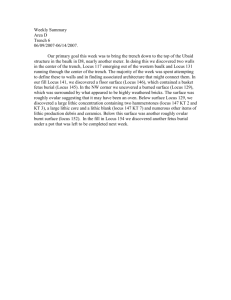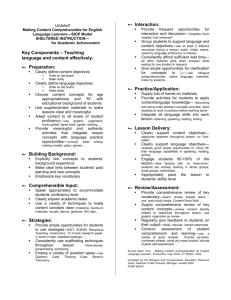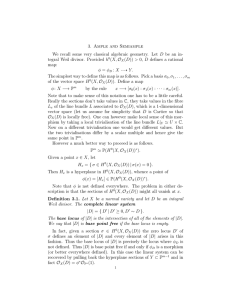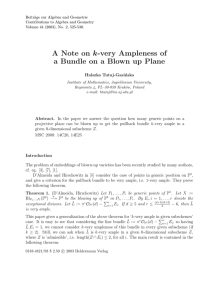MODEL ANSWERS TO THE THIRD HOMEWORK 1. See question 3
advertisement
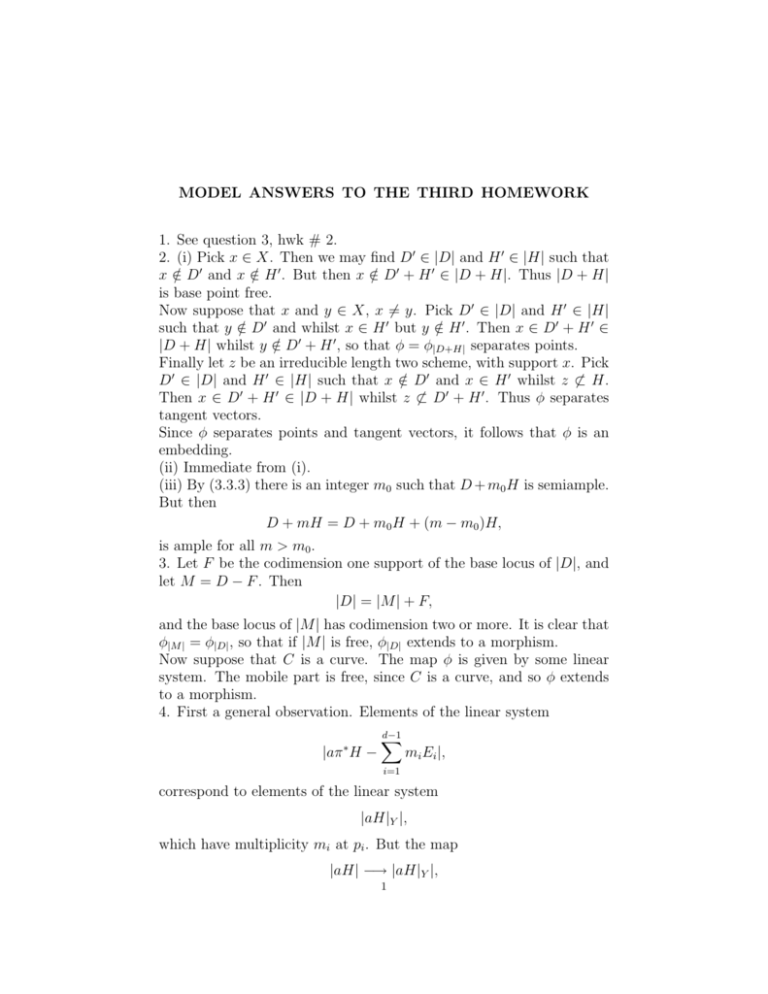
MODEL ANSWERS TO THE THIRD HOMEWORK 1. See question 3, hwk # 2. 2. (i) Pick x ∈ X. Then we may find D0 ∈ |D| and H 0 ∈ |H| such that x∈ / D0 and x ∈ / H 0 . But then x ∈ / D0 + H 0 ∈ |D + H|. Thus |D + H| is base point free. Now suppose that x and y ∈ X, x 6= y. Pick D0 ∈ |D| and H 0 ∈ |H| such that y ∈ / D0 and whilst x ∈ H 0 but y ∈ / H 0 . Then x ∈ D0 + H 0 ∈ 0 0 |D + H| whilst y ∈ / D + H , so that φ = φ|D+H| separates points. Finally let z be an irreducible length two scheme, with support x. Pick D0 ∈ |D| and H 0 ∈ |H| such that x ∈ / D0 and x ∈ H 0 whilst z 6⊂ H. Then x ∈ D0 + H 0 ∈ |D + H| whilst z 6⊂ D0 + H 0 . Thus φ separates tangent vectors. Since φ separates points and tangent vectors, it follows that φ is an embedding. (ii) Immediate from (i). (iii) By (3.3.3) there is an integer m0 such that D + m0 H is semiample. But then D + mH = D + m0 H + (m − m0 )H, is ample for all m > m0 . 3. Let F be the codimension one support of the base locus of |D|, and let M = D − F . Then |D| = |M | + F, and the base locus of |M | has codimension two or more. It is clear that φ|M | = φ|D| , so that if |M | is free, φ|D| extends to a morphism. Now suppose that C is a curve. The map φ is given by some linear system. The mobile part is free, since C is a curve, and so φ extends to a morphism. 4. First a general observation. Elements of the linear system |aπ ∗ H − d−1 X mi Ei |, i=1 correspond to elements of the linear system |aH|Y |, which have multiplicity mi at pi . But the map |aH| −→ |aH|Y |, 1 2 MODEL ANSWERS TO THE THIRD HOMEWORK is surjective, since the obsruction to surjectivity is H 1 (Pn , OPn (a−d))=0 Putting all of this together, elements of the linear system ∗ |aπ H − d−1 X mi Ei |, i=1 correspond to elements of the linear system |aH|, which when restricted to Y have multiplicity mi at pi . (iii) A hyperplane H ⊂ Pn+1 that contains p1 , p2 , . . . , pd−1 must contain the line l. It follows that that the base locus of |mL| is pd . (i) clear from (iii). (ii) Let m̃ be the strict transform of the line. Then D · m̃ = H · m − 1 = 0. Thus D is not ample. (iv) Now KY = (KPn+1 + Y )|Y = (d − n − 2)H|Y . Thus ∗ KX = π KY + (n − 1) d−1 X ∗ Ei = (d − n − 2)π H|Y + (n − 1) i=1 d−1 X Ei . i=1 It follows that ∗ KX + nD = (d − 2)π H|Y − d−1 X Ei . i=1 Consider hypersurfaces W ⊂ Pn+1 of degree d − 2 containing the d − 1 points p1 , p2 , . . . , pd−1 . If W does not contain l, then W · l ≥ d − 1, a contradiction. Thus any hypersurface of degree d − 1 containing the points p1 , p2 , . . . , pd−1 must contain the line l. In particular it must contain the point pd . Thus pd is in the base locus of the linear system |KX + nD|. 5. It is proved in (3.8) that the second term is correct when X is a curve. Following the proof of (3.8), if we pick a very ample divisor MODEL ANSWERS TO THE THIRD HOMEWORK 3 H such that |D + H| is also very ample and we pick H ∈ |H| and G ∈ |D + H| general then by induction we have ∆P (m − 1) = χ(G, OG (mD + E + H)) − χ(H, OH (mD + E + H)) Dn mn−1 Dn−2 · (G · (KX + G − 2(E + H)) − H · (KX + H − 2(E + H)))mn−2 + (n − 1)! 2(n − 2)! n n−1 n n−2 n−1 D m D m D · (KX − 2E)mn−2 = + + + ..., (n − 1)! 2(n − 2)! 2(n − 2)! = so that P (m) = as required. Dn mn Dn−1 · (KX − 2E)mn−1 + + ..., n! 2(n − 1)!
